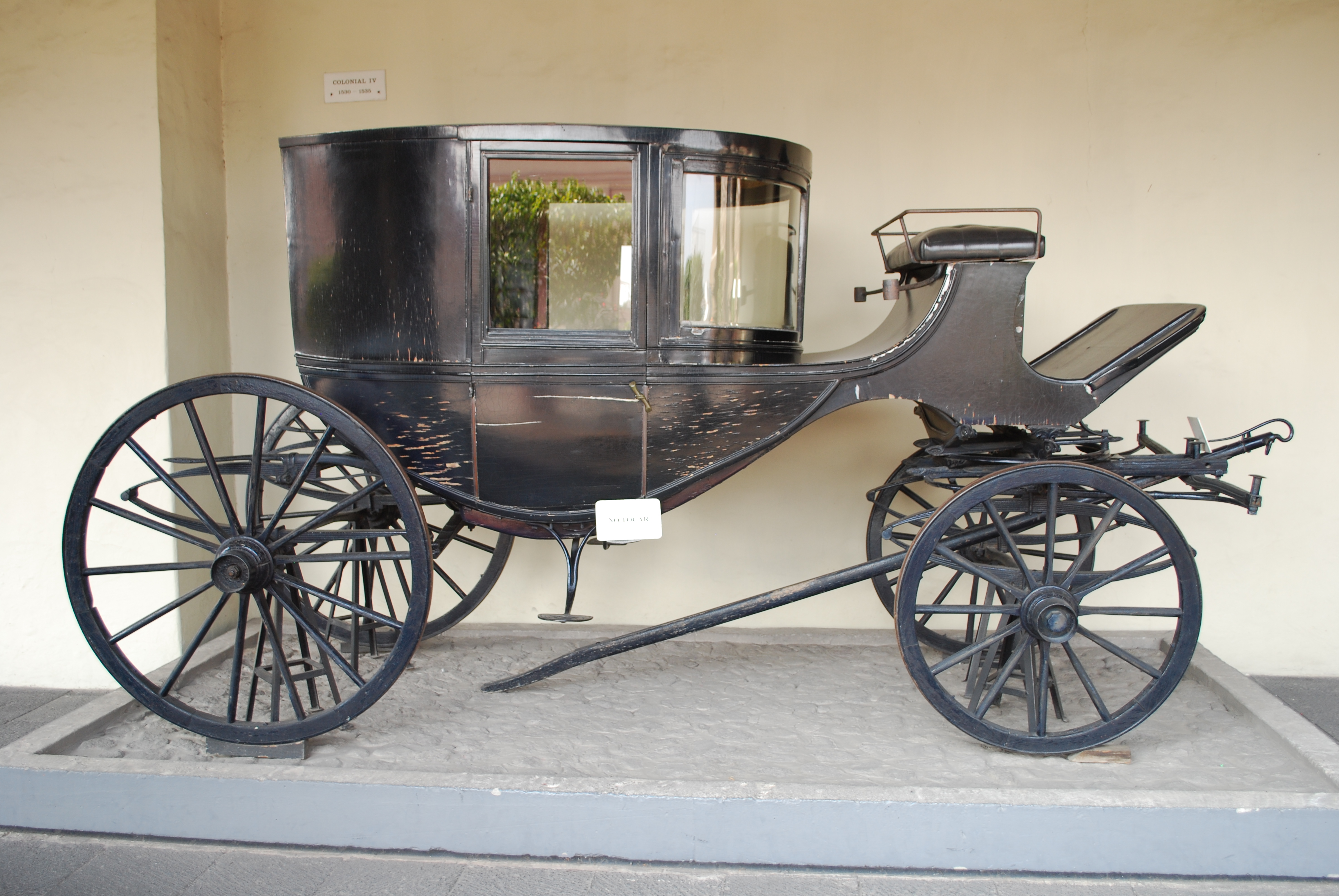Clarence (carriage) on:
[Wikipedia]
[Google]
[Amazon]
 A clarence is a type of
A clarence is a type of
File:Clarence Coach (19th Century) (25401104647).jpg, King Pedro V's Clarence coach at
Pictures of a clarence
{{Authority control Carriages
carriage
A carriage is a two- or four-wheeled horse-drawn vehicle for passengers. In Europe they were a common mode of transport for the wealthy during the Roman Empire, and then again from around 1600 until they were replaced by the motor car around 1 ...
that was popular in the early 19th century. It is a closed, four-wheeled horse-drawn vehicle
A horse-drawn vehicle is a piece of equipment pulled by one or more horses. These vehicles typically have two or four wheels and were used to carry passengers or a load. They were once common worldwide, but they have mostly been replaced by auto ...
with a projecting glass front and seats for four passengers inside. The driver sat at the front, outside the carriage. The clarence was named after Prince William, Duke of Clarence and St Andrews, later King William IV
William IV (William Henry; 21 August 1765 – 20 June 1837) was King of the United Kingdom of Great Britain and Ireland and King of Hanover from 26 June 1830 until his death in 1837. The third son of George III, William succeeded hi ...
of the United Kingdom, who died in 1837. It was introduced in 1840 in London
London is the Capital city, capital and List of urban areas in the United Kingdom, largest city of both England and the United Kingdom, with a population of in . London metropolitan area, Its wider metropolitan area is the largest in Wester ...
. The Brougham was a lighter, two-passenger version originally commissioned by Lord Brougham
Henry Peter Brougham, 1st Baron Brougham and Vaux, (; 19 September 1778 – 7 May 1868) was a British statesman who became Lord High Chancellor of Great Britain and played a prominent role in passing the Reform Act 1832 and Slavery ...
.
In time, second-hand clarences came to be used as hackney carriage
A hackney or hackney carriage (also called a cab, black cab, hack or taxi) is a carriage or car for hire. A hackney of a more expensive or high class was called a remise. A symbol of London and Britain, the black taxi is a common sight on t ...
s, earning the nickname ''growler'' from the sound they made on London's cobbled streets.
Gallery
National Coach Museum
The National Coach Museum () is located in Lisbon, Portugal. First established in 1905 as the Royal Coaches Museum (), the museum houses historic horse-drawn coaches and carriages that belonged to the royal houses of Portugal from the 16th t ...
, Portugal
File:Lisbon, Museu Nacional dos Coches, coach for the president of the republic.JPG, The presidential coach, National Coach Museum
The National Coach Museum () is located in Lisbon, Portugal. First established in 1905 as the Royal Coaches Museum (), the museum houses historic horse-drawn coaches and carriages that belonged to the royal houses of Portugal from the 16th t ...
, Portugal
File:Horse (Cleveland Bay) Drawn Clarence (Brougham) Carriage & Victoria Memorial, Buckingham Palace, Westminster, London (3795290693).jpg, A Clarence from the Royal Mews
The Royal Mews is a mews, or collection of equestrian stables, of the British royal family. In London these stables and stable-hands' quarters have occupied two main sites in turn, being located at first on the north side of Charing Cross, and ...
in London
File:Staatsierijtuig Kareta Kiai Garoedajaksa van de sultan van Jogjakarta, KITLV 43798.tiff, The Sultan of Yogyakarta's state carriage
References
External links
Pictures of a clarence
{{Authority control Carriages